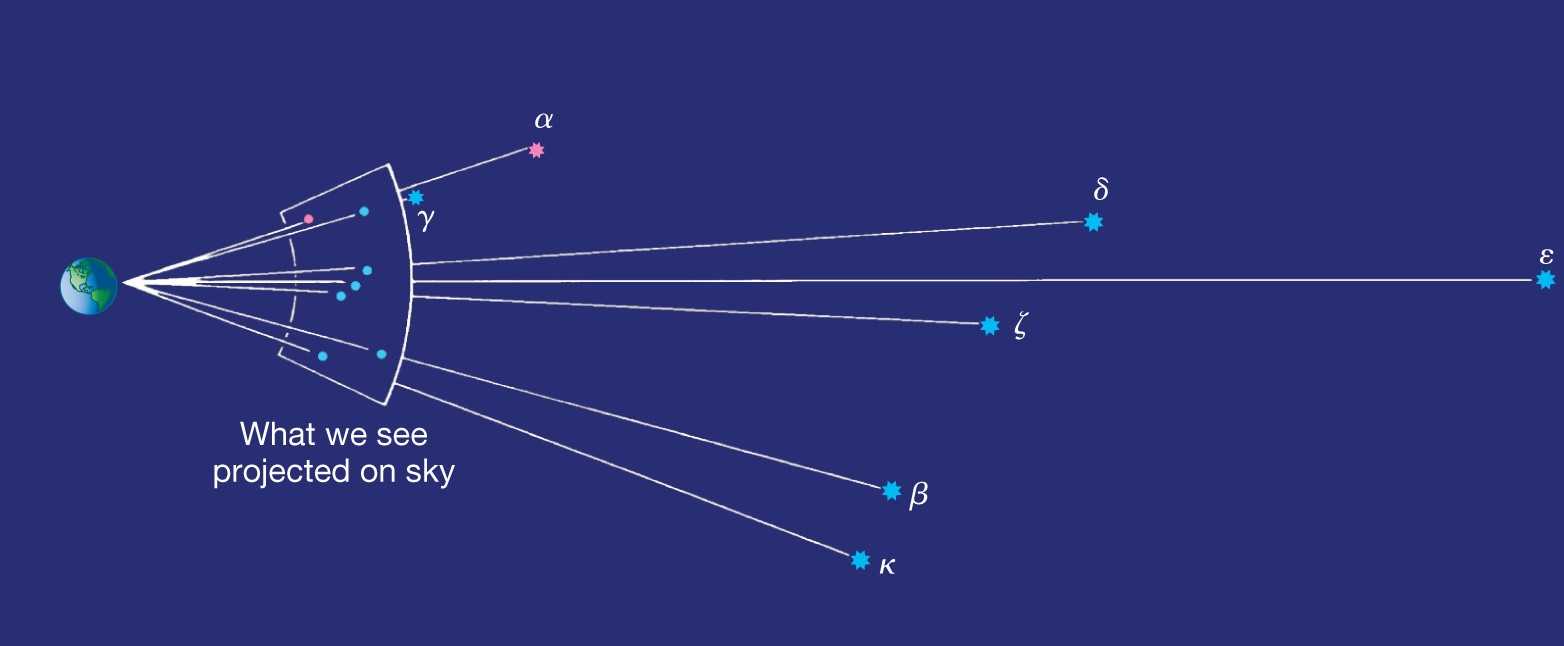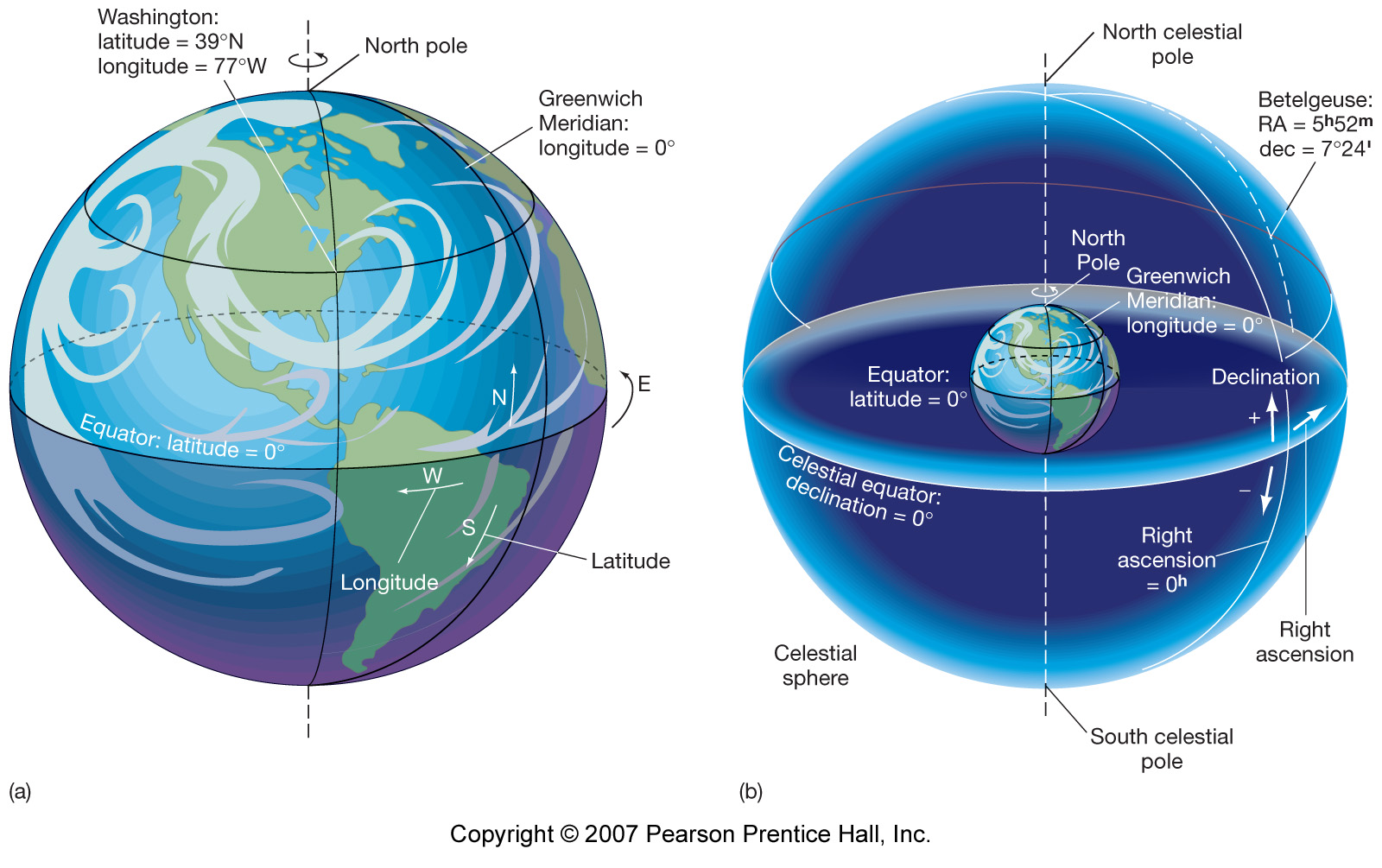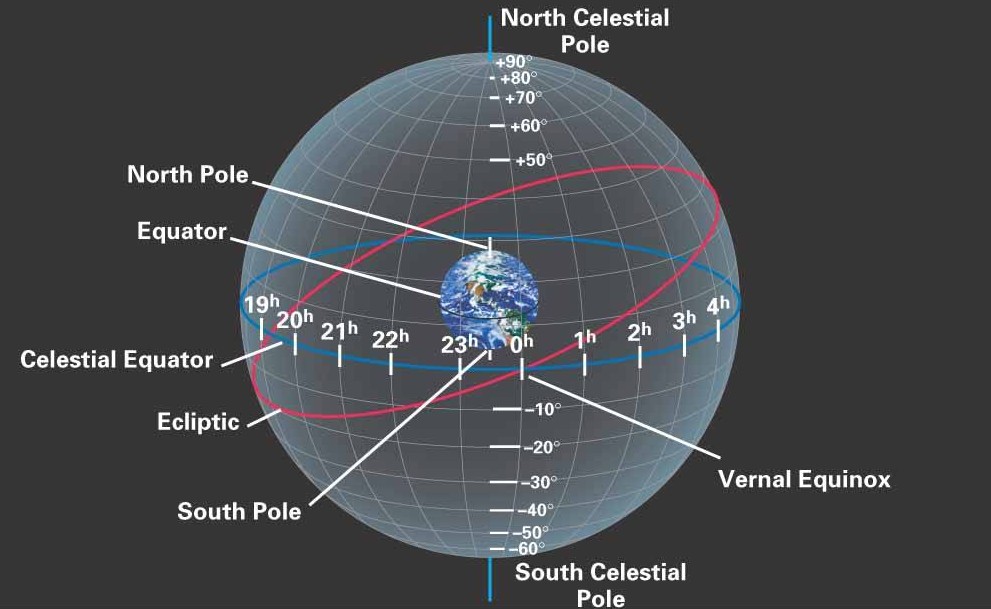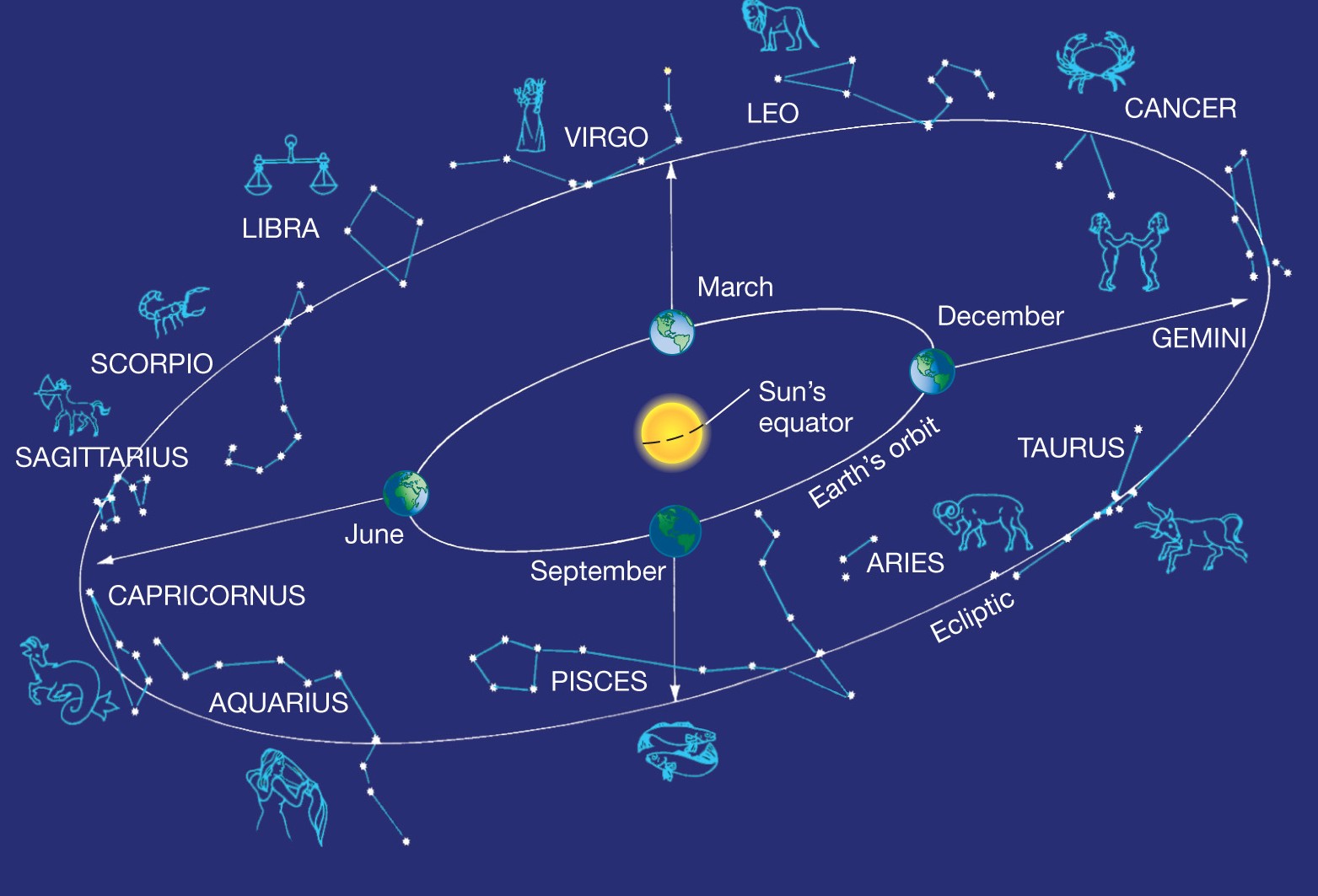

Look at the sky! What do we see: "the celestial sphere". This is a sort of map of the sky, smilar to the globe.
Stars form APPARENT groups: the 88 constellation.

Recall our system of latitude
(which imaginary East-West oriented line parallel to the equator that
we
lie on)
and longitude (which imaginary North-South line
perpendicular
to the equator that we lie on) for specifying
positions on the surface
of the Earth:

Tallahassee is located at
about
30 degrees North of the equator, and 84 degrees
West
of the prime
meridian, which goes through Greenwich, England.

As we watch the stars thoughout the night, they
appear to rotate around Polaris, since the Earth
rotates
around its North-South axis.
So, the NORTH STAR (Polaris) is located 30 degrees above the horizon.


Just as the stars, the
Sun and the Moon rise from the East and set to the West, due to the
rotation of the Earth.

The
Annual Motion and Seasons
Position of stars
relative to each other appears
not to change. They seem "glued"
to a Cellestial Sphere which appears to rotate around the
Earth.

The Cellestial Equator separates the North and the South cellestial
hemisphere.
Throughtout the year, the Sun
changes its position on the Cellestial Sphere,
relative to the stars. It appears to travel on a line called the
Ecliptic, which
is tilted at an angle of 23.5 degrees relative to the Cellestial
Equator.

Points where the Ecliptic intersects the Cellestiasl Equator are called
the
Equinoxes. When the Sun is
located there, the day and night last exactly
for 12 hours.
What
Causes the Seasonal Changes?

In the Summer, the Sun is higher up in the sky, and
days are longer. This is
due to
the tilt of the Earth's axis
with respect to its trajectory around the Sun (the Ecliptic
plane). As a result more sunlight
hits the Northern hemisphere, and it becomes
hotter. In Winter it's the
opposite: shorter days, less sunlight, and it's colder.

The area close to the North Pole
(inside the "Arctic Circle") is in sunlight for
6 months! One can see the Sun for
24 hours a day. This is the phenomenon
of the "midnight Sun."
The
Precession of the Earth's Axis